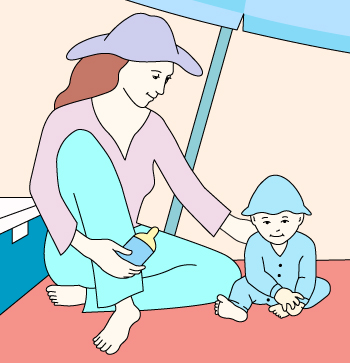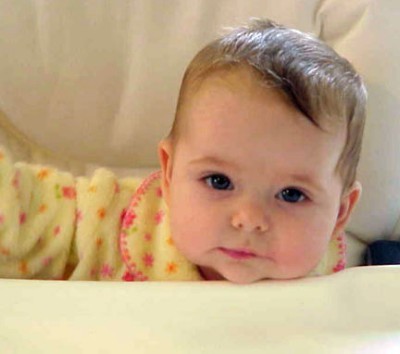Sunscreen and babys has been and issue since my daughter was born 12 years ago. No one really cares about sunscreen and babys until they have their own. You’re at the beach, slathered in sunscreen. Your 5-month-old baby is there, too. Should you put sunscreen on her? Not usually, according to Hari Cheryl Sachs, M.D., a pediatrician at the Food and Drug Administration (FDA).
“The best approach is to keep infants under 6 months out of the sun,” Sachs says, “and to avoid exposure to the sun in the hours between 10 a.m. and 2 p.m., when ultraviolet (UV) rays are most intense.”
Sunscreen and Babys
Sunscreens are recommended for children and adults. What makes babies so different?
For one thing, babies’ skin is much thinner than that of adults, and it absorbs the active, chemical ingredients in sunscreen more easily, explains Sachs. For another, infants have a high surface-area to body- ratio compared to older children and adults. Both these factors mean that an infant’s exposure to the chemicals in sunscreens is much greater, increasing the risk of allergic reaction or inflammation.
The best protection is to keep your baby in the shade, if possible, Sachs says. If there’s no natural shade, create your own with an umbrella or the canopy of the stroller.
If there’s no way to keep an infant out of the sun, you can apply a small amount of sunscreen—with a sun protection factor (SPF) of at least 15—to small areas such as the cheeks and back of the hands. Sachs suggests testing your baby’s sensitivity to sunscreen by first trying a small amount on the inner wrist.
Cover Up your baby

The American Academy of Pediatrics (AAP) suggests dressing babyes in light long pants, long-sleeved shirts, and brimmed hats that shade the neck to prevent sunburn. Tight weaves are better than loose. Keep in mind that while baseball caps are cute, they don’t shade the neck and ears, sensitive areas for a baby.
Summer’s heat presents other challenges for babies.
Younger babys also don’t sweat like we do, Sachs says. Sweat naturally cools the rest of us down when we’re hot, but babies haven’t yet fully developed that built-in heating-and-cooling system. So you want to make sure your baby doesn’t get overheated.
In the heat, babies are also at greater risk of becoming dehydrated. To make sure they’re adequately hydrated, offer them their usual feeding of breast milk or formula, says Sachs. The water content in both will help keep them well hydrated. A small of amount water in between these feedings is also okay.
Sun Safety Tips for Babys
Here are some things to keep in mind this summer when outside with babies:
- Keep your baby in the shade as much as possible. If you do use a small amount of sunscreen on your baby, don’t assume the child is well protected.
- Make sure your child wears clothing that covers and protects sensitive skin. Use common sense; if you hold the fabric against your hand and it’s so sheer that you can see through it, it probably doesn’t offer enough protection.
- Make sure your baby wears a hat that provides sufficient shade at all times.
- Watch your baby carefully to make sure he or she doesn’t show warning signs of sunburn or dehydration. These include fussiness, redness and excessive crying.
- Hydrate! Give your baby formula, breast milk, or a small amount of water between feedings if you’re out in the sun for more than a few minutes. Don’t forget to use a cooler to store the liquids.
- Take note of how much your baby is urinating. If it’s less than usual, it may be a sign of dehydration, and that more fluids are needed until the flow is back to normal.
- Avoid sunscreens containing the insect repellant DEET on infants, particularly on their hands. Young children may lick their hands or put them in their mouths. According to AAP, DEET should not be used on infants less than 2 months old.
- If you do notice your baby is becoming sunburned, get out of the sun right away and apply cold compresses to the affected areas.
The FDA has a lot of other info that is great for health in the Summer and in the sun, not just about sunscreen and babys. Check it out at http://www.fda.gov




